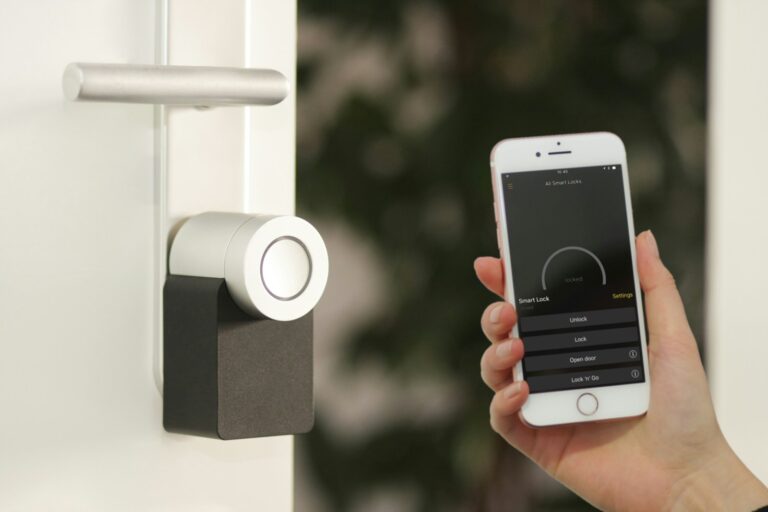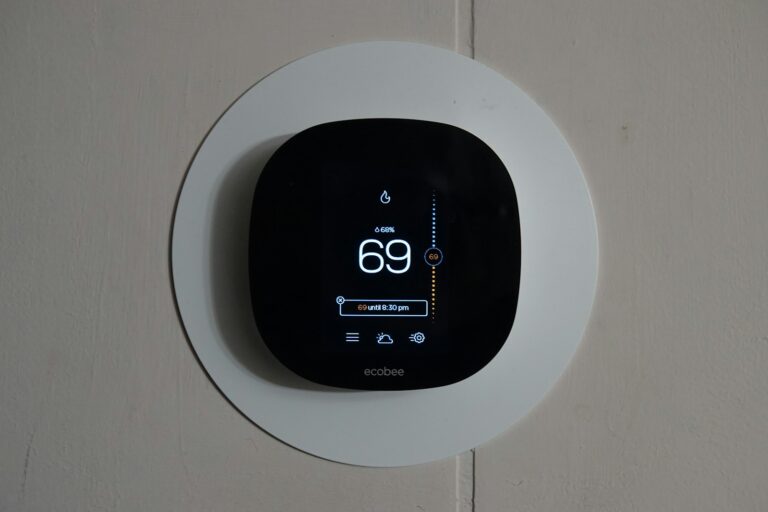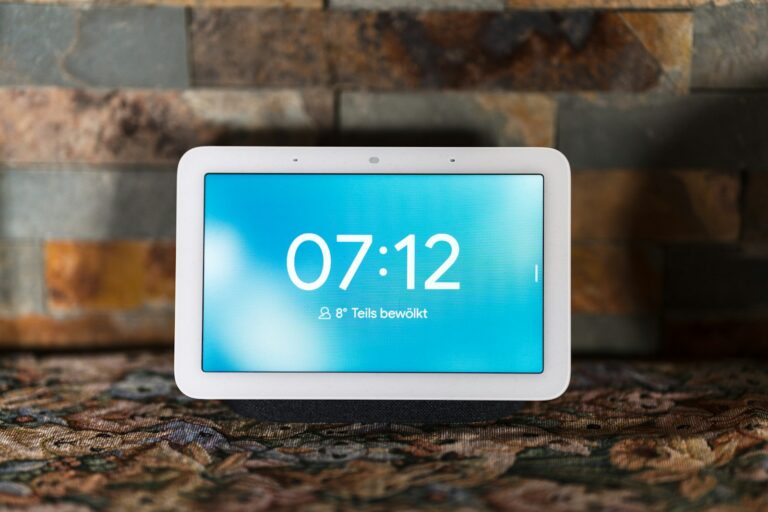
Working from home has changed how many of us think about our living spaces. As our kitchen tables transform into desks and spare bedrooms into offices, questions arise about insurance protection. Homeowners insurance typically provides limited coverage for remote workers, usually protecting personal equipment up to $2,500, but full-time employees and independent contractors have different levels of protection.
Many remote workers don’t realize their standard homeowners policy might not fully cover business-related incidents. If you’re working from home, your policy may cover basic scenarios like damage to your laptop from a covered peril, but specialized equipment may require additional coverage. For liability concerns, such as a delivery person slipping on your porch while dropping off work supplies, coverage can get complicated.
The boundary between personal and professional space creates insurance gray areas. While your employer’s insurance might protect company-owned equipment, independent contractors generally receive no coverage from standard homeowners policies, making it essential to understand your specific situation.
What Does Homeowners Insurance Cover for Remote Workers?
As remote and hybrid work have become the norm, many professionals are using their homes as offices. But when your workspace shifts from company property to your living room, a big question arises: Does your homeowners insurance protect your work equipment and activities?
Let’s break it down.
🔍 1. What Homeowners Insurance Typically Covers
Standard homeowners insurance is designed to protect personal property and liability related to your home life — not necessarily your business or work activities. According to Asurion and Experian, typical coverage includes:
- Dwelling coverage: Repairs or rebuilds your home if it’s damaged by covered perils (like fire, theft, or storms).
- Personal property coverage: Protects your belongings — including some electronics — up to policy limits.
- Liability protection: Covers injuries or property damage to others that happen on your property.
- Additional living expenses (ALE): Pays for temporary housing if your home becomes uninhabitable after a covered loss.
💻 2. Coverage for Work Equipment and Business Property
If you’re a remote employee, your homeowners insurance may cover some work equipment — but with limits.
- Most policies include $2,500–$5,000 in coverage for business property inside the home (source: Apollo Cover).
- Coverage for off-premises business property (like a laptop stolen from your car) may drop to $500–$1,500.
- If your employer owns the equipment, their business insurance may cover it instead.
If you’re self-employed or run a home-based business, homeowners insurance usually won’t cover business property adequately. You may need:
- Home-based business insurance
- Inland marine coverage (for portable equipment)
- Business owners policy (BOP) for broader protection
🧾 3. Liability Coverage for Work-Related Incidents
Homeowners liability coverage protects you if someone is injured on your property — but not always if it’s business-related.
For example:
- If a client visits your home office and gets injured, your standard homeowners policy may not cover the claim.
- You’d need business liability insurance to protect against lawsuits or medical costs (source: Liberty Mutual).
⚙️ 4. When Your Employer’s Insurance May Help
If you’re a remote employee, your employer’s commercial insurance may extend limited coverage to you while working from home. This can include:
- Company-owned equipment
- Cybersecurity or data breach protection
- Workers’ compensation for job-related injuries
However, this varies widely by employer — always confirm with your HR or risk management department.
🛡️ 5. Additional Coverage Options for Remote Workers
To fill the gaps, consider adding one or more of these to your insurance portfolio:
| Coverage Type | What It Covers | Ideal For |
|---|---|---|
| Home-based business endorsement | Expands homeowners policy to include limited business property and liability | Freelancers, part-time remote workers |
| Business owners policy (BOP) | Combines property, liability, and business interruption coverage | Self-employed professionals |
| Equipment protection plan | Covers accidental damage, power surges, and mechanical breakdowns | Remote workers using expensive tech |
| Cyber liability insurance | Protects against data breaches and cyberattacks | Anyone handling client or company data |
🧠 6. Tips for Remote Workers
- Inventory your equipment: Document serial numbers, values, and ownership (personal vs. employer).
- Ask your employer: Clarify who insures what — especially for laptops, monitors, or phones.
- Review your policy limits: You may need to increase personal property coverage or add endorsements.
- Consult an insurance agent: Every situation is unique; they can tailor coverage to your remote work setup.
✅ Key Takeaway
Homeowners insurance does provide some protection for remote workers, but it’s limited — especially for business property and liability.
If you’re a remote employee, check if your employer’s policy covers your work equipment.
If you’re self-employed, consider adding business coverage or a home-based business endorsement to stay fully protected.
Sources:
- Asurion – What does homeowners insurance cover for remote workers?
- Apollo Cover – Working from home: The remote worker’s guide to insurance
- Experian – What Insurance Do You Need if You Work From Home?
- Liberty Mutual – Guide to Insurance for Home-Based Businesses
- Freeway Insurance – The Impact of Remote Work on Home Insurance Needs
Key Takeaways
- Standard homeowners insurance provides limited protection for remote work equipment, typically up to $2,500 in coverage.
- Employee status matters significantly, as independent contractors need different coverage than full-time remote employees.
- Additional policies or endorsements may be necessary to fully protect business property and liability while working from home.
Understanding Homeowners Insurance
Homeowners insurance provides financial protection for your home and belongings. It offers coverage for various situations, but remote workers should understand how standard policies might affect their work setup.
Basic Coverage Principles
Homeowners insurance typically covers your dwelling, personal property, liability, and additional living expenses. If your house becomes unlivable due to a covered event like a fire, your policy may help cover temporary housing costs, including hotel stays, meals, and even pet boarding.
For remote workers, standard policies offer some protection for personal items used for work. However, coverage limits usually apply to business equipment. Most policies cap business property coverage at $2,500 or less when at home, and even lower amounts when away from home.
Liability coverage might partially protect remote employees, but the extent varies by insurer. This protection becomes particularly important if clients visit your home office for business purposes.
Standard vs. Add-on Policies
Standard homeowners policies weren’t designed with remote workers in mind. They often provide limited coverage for work-related liability and business equipment. The coverage distinction also depends on employment status—full-time remote employees may receive some basic coverage, while independent contractors typically receive none.
For comprehensive protection, remote workers should consider these add-ons:
- Home business endorsement: Adds $3,000-$10,000 coverage for business equipment
- In-home business policy: Provides broader coverage for equipment, liability, and loss of income
- Business owners policy (BOP): Offers comprehensive coverage for those with clients visiting their home
Insurance brokers can help evaluate your specific work arrangement and recommend appropriate coverage options. Many remote workers need to ensure they’re properly covered, especially when conducting business with in-person customers.
Remote Work and Homeowners Insurance
As more people work from home, understanding how homeowners insurance applies to remote work setups has become essential. Standard policies offer some protection, but may not fully cover business equipment or liability issues.
Policy Adjustments for Home Workers
Remote workers should review their existing home insurance policies to determine if adjustments are needed. A standard homeowners policy typically covers electronics like computers and tablets if they’re damaged by events covered in your plan. However, these policies often have limits.
For employees who telecommute, employers sometimes provide additional coverage for company-owned equipment. It’s worth checking if the company has insurance that covers theft or damage of their equipment in a home setting.
Self-employed remote workers face different challenges. They may need to consider adding endorsements to their current policy or purchasing separate business insurance. These options provide better protection for business assets and potential liability claims.
Limits and Exclusions
Most homeowners policies have significant limitations when it comes to business equipment. Coverage is often capped at low amounts – typically between $1,500 and $2,500 for business property.
Another important consideration is liability. Standard policies usually don’t cover business-related injuries that occur in the home. If a client or delivery person is injured while visiting for business purposes, the homeowner might be personally liable.
Business equipment damaged during power surges or mechanical failures might not be covered either. For comprehensive protection, remote workers should consider business insurance options like business owner’s policies or professional liability insurance.
Coverage requirements also differ between company employees and self-employed individuals. Employees should verify what their employer’s policy covers, while self-employed workers may need more extensive business coverage.
Liability Concerns for Remote Workers
Working from home creates unique liability situations that both employees and employers should understand. Insurance coverage needs often change when work moves from a traditional office to a home setting.
Workers’ Compensation and Remote Employment
Remote employees are typically still covered by workers’ compensation insurance even when working from home. However, proving that an injury is work-related becomes more complicated in a home environment.
The “coming and going” rule that normally excludes commuting injuries doesn’t apply when your home is your workplace. This creates gray areas about when you’re “at work.”
Employers may establish designated work hours and spaces to clarify when workers’ compensation coverage applies. Some companies require remote workers to document their home office setup to ensure it meets safety standards.
Remote employees should check their employment contracts to understand how workers’ compensation applies to their specific situation. Companies may need to update their policies to account for the different risks associated with remote work environments.
Third-Party Claims and Home Business Activities
When clients or delivery personnel visit your home office, they could potentially file claims if they’re injured on your property. Standard homeowners policies typically offer limited coverage for business-related visitors.
Many homeowners policies exclude or severely limit coverage for business activities. This creates potential gaps if a third party is injured during work-related activities at your home.
Remote workers who regularly meet clients at home should consider additional liability protection beyond standard homeowners insurance. Options include endorsements to existing policies or separate business liability coverage.
Business property kept at home often exceeds the typical $2,500 limit in standard homeowners policies. Valuable equipment like specialized computers or photography gear may need additional coverage through business insurance.
Property and Equipment Coverage
When working from home, understanding how your homeowners insurance protects your equipment is essential. Standard policies have limitations for business property, and coverage varies depending on ownership and value.
Company-Owned vs. Personal Equipment
Most standard homeowners insurance policies cover personal electronics like computers and tablets if they’re damaged by covered perils such as fire or lightning. However, coverage distinctions exist between personal and company-owned equipment.
Personal equipment used for work typically has limited coverage, often around $2,500 for business-related items. This limit may be insufficient for professionals with expensive setups.
Company-owned equipment, on the other hand, is generally covered by the employer’s insurance policy. Remote workers should verify with their employers about coverage for equipment provided for home use.
Some employers will issue separate insurance policies for high-value equipment sent to employees’ homes. Others might require employees to sign liability agreements for company property.
Special Considerations for High-Value Items
Standard home insurance policies typically limit business property coverage to $2,500, which may not be adequate for specialized equipment. Professionals with high-value items should consider additional protection.
Endorsements or riders can be added to existing homeowners policies to increase coverage limits for business equipment. These additions typically require minimal premium increases while providing substantial additional protection.
For significant investments in home office equipment, a separate business property insurance policy might be necessary. This is especially relevant for remote workers using specialized technology or equipment.
Documenting all work equipment through photographs and receipts helps expedite claims processes. Keeping records of equipment serial numbers and purchase dates is highly recommended.
Some insurance providers offer special work-from-home policies that bridge the gap between homeowners and business insurance for the modern remote worker.
Cybersecurity and Data Protection
Remote work creates unique digital risks that traditional homeowners insurance may not fully cover. As cyber threats increase, protecting your data and devices requires specialized coverage.
Insurance for Cyber Threats
Standard homeowners insurance typically provides limited protection for your computers and electronics if they’re damaged by covered perils like fire or theft. However, many standard policies don’t adequately cover cybersecurity incidents.
For remote workers, specialized cyber insurance is becoming essential. This coverage helps with:
- Costs related to data breaches
- Recovery from ransomware attacks
- Identity theft protection
- Legal expenses from cyber incidents
Since the pandemic began, cyber attacks targeting remote workers have increased dramatically. Many insurers now offer endorsements or separate policies that provide protection against online crimes.
Remote workers handling sensitive client information should verify their coverage limits. Most standard policies cap electronics coverage at around $2,500 total, which may be insufficient for professional equipment.
Maintaining Digital Security at Home
Creating a secure work environment is crucial for remote workers. Insurance providers often require certain security measures before providing coverage.
Essential security practices include:
- Using strong, unique passwords for all accounts
- Enabling two-factor authentication
- Installing and updating antivirus software
- Securing home networks with strong encryption
- Backing up important data regularly
Many companies implemented security protocols during COVID-19 that continue today. Remote workers should follow employer guidelines while also taking personal responsibility for their digital security.
Separate work and personal activities on different devices when possible. This separation can limit potential damage from security breaches and may affect insurance claims.
Regular security training helps remote workers identify phishing attempts and other common threats. Staying vigilant against evolving cyber risks is as important as having proper insurance coverage.
Health and Wellness Considerations
Remote work affects both physical health and insurance coverage. Workers need to understand how to protect their wellbeing and ensure they have appropriate insurance protection while working from home.
Remote Workers’ Health Insurance
Remote workers often face unique health insurance situations, especially when working across state or national boundaries. Many employers offer health plans with flexible coverage options for remote employees who may live far from company headquarters.
Some companies provide specialized global health coverage designed for mobile employees. These plans typically offer online accessibility and broader network coverage than traditional location-based insurance.
Remote workers should verify their coverage details, particularly if they:
- Work from multiple locations
- Live in a different state than their employer
- Travel frequently for work
Insurance needs may change based on permanent relocation versus temporary remote work arrangements. It’s important to communicate openly with HR departments about any location changes that might affect coverage.
Promoting Physical and Mental Health
Creating a healthy home workspace is crucial for remote workers’ wellbeing. Proper ergonomics can prevent physical strain and injuries that may develop over time.
Key ergonomic considerations include:
- Adjustable chair with proper back support
- Monitor at eye level
- Keyboard and mouse positioned to minimize wrist strain
- Adequate lighting to reduce eye fatigue
Mental health challenges are common among remote workers. The isolation of working from home can lead to increased stress and burnout if not properly managed.
Effective strategies for maintaining mental wellness include:
- Setting clear boundaries between work and personal time
- Taking regular breaks throughout the workday
- Scheduling virtual social interactions with colleagues
- Creating morning and evening routines to replace commute time
Physical activity often decreases when working remotely. Incorporating regular movement breaks and dedicated exercise time helps maintain health and boost productivity.
Additional Coverage Options
Regular homeowners insurance often falls short for remote workers. Specific policy upgrades and supplementary coverage can better protect your business equipment and liability needs.
Supplementary Policies for Remote Workers
Remote workers should consider commercial umbrella insurance to expand their protection beyond basic homeowners coverage. This type of policy provides extended liability protection for business-related incidents that occur in your home office.
An incidental office occupancy endorsement is another valuable option. This addition to your existing homeowners policy can:
- Increase coverage limits for business equipment
- Provide liability protection for business visitors
- Expand off-premise coverage for equipment
Business Owner’s Policies (BOPs) combine property and liability coverage specifically for business needs. These are particularly important for independent contractors who receive no coverage from standard homeowners insurance.
Evaluating the Need for Additional Insurance
The necessity for supplemental coverage depends largely on your employment status. Permanent remote workers employed by a company may already have some protection through their employer’s policies, while self-employed individuals bear full responsibility for their insurance needs.
Consider these factors when assessing your insurance needs:
- Value of business equipment (computers, specialized tools, etc.)
- Frequency of client visits to your home office
- Nature of your business activities
- Data security requirements
Remote workers who use their vehicles for business purposes should also review their car insurance policies. Personal auto policies typically exclude business use, requiring additional coverage.
Companies with remote staff should consider employer’s liability insurance which covers legal expenses that might arise from home-based work arrangements.
Frequently Asked Questions
Remote work has changed how people use their homes, raising important insurance questions. Most standard homeowners policies offer limited protection for business activities, with specific limits and exclusions.
Are work-related electronics covered by standard homeowners insurance policies when used at home?
Standard homeowners insurance typically provides limited coverage for work electronics. Most policies include a business property limit between $1,500 to $2,500 for items used for business purposes at home.
This coverage applies to company-owned equipment entrusted to the employee as well as personal devices used for work. However, these limits can be quickly reached with today’s expensive laptops, monitors, and other tech equipment.
For higher-value electronics, remote workers should consider additional coverage options like a home business endorsement or a separate business property policy.
How does home office equipment factor into homeowners insurance coverage?
Home office furniture and equipment receive the same limited coverage as electronics under standard policies. Items like desks, chairs, and filing cabinets fall under the business property sublimits.
If the home office setup exceeds the standard $2,500 limit, homeowners may need to upgrade their coverage. Some insurers offer home business endorsements that can increase these limits substantially.
Documenting home office equipment with photos and receipts helps ensure proper coverage. This documentation proves ownership and value if claims become necessary.
Do remote workers need additional homeowners insurance for business liability?
Standard homeowners insurance doesn’t typically cover business liability risks. This creates a significant gap for remote workers who may face professional liability claims.
Remote employees should check if their employer’s commercial liability policy extends to their home office. If not, additional coverage may be necessary.
Options include endorsements to existing homeowners policies or separate business insurance policies. These provide protection against claims related to professional activities conducted from home.
Will homeowners insurance provide coverage for damages sustained by clients visiting a home-based office?
Most homeowners policies exclude coverage for business-related visitors. If a client visits a home office and sustains an injury, the standard policy likely won’t cover the claim.
This represents a significant exposure for remote workers who meet clients at home. Without proper coverage, they could face personal liability for medical expenses and legal costs.
Business liability insurance or a home business endorsement can fill this gap. These options specifically extend coverage to business visitors and related claims.
What are the limitations of homeowners insurance coverage for home-based business inventory?
Homeowners insurance provides minimal coverage for business inventory kept at home. Standard policies typically limit coverage to around $2,500, which may be inadequate for many businesses.
Products, supplies, and materials intended for business use face strict sublimits. Once these limits are exceeded, losses would not be covered under a standard policy.
Remote workers who maintain inventory at home should consider commercial property insurance or specialized home business policies that provide appropriate coverage limits.
How does homeowners insurance treat loss of income due to a home-based business interruption?
Standard homeowners insurance doesn’t cover business income losses. If a covered peril like fire or water damage makes the home uninhabitable, only personal expenses—not business losses—would be covered.
Remote workers facing business interruption would have no protection for lost income under typical homeowners policies. This creates a significant financial vulnerability.
Business income insurance can provide this protection, covering lost revenue and ongoing expenses during recovery periods. This coverage can be obtained through commercial policies or sometimes as endorsements to existing homeowners insurance.






